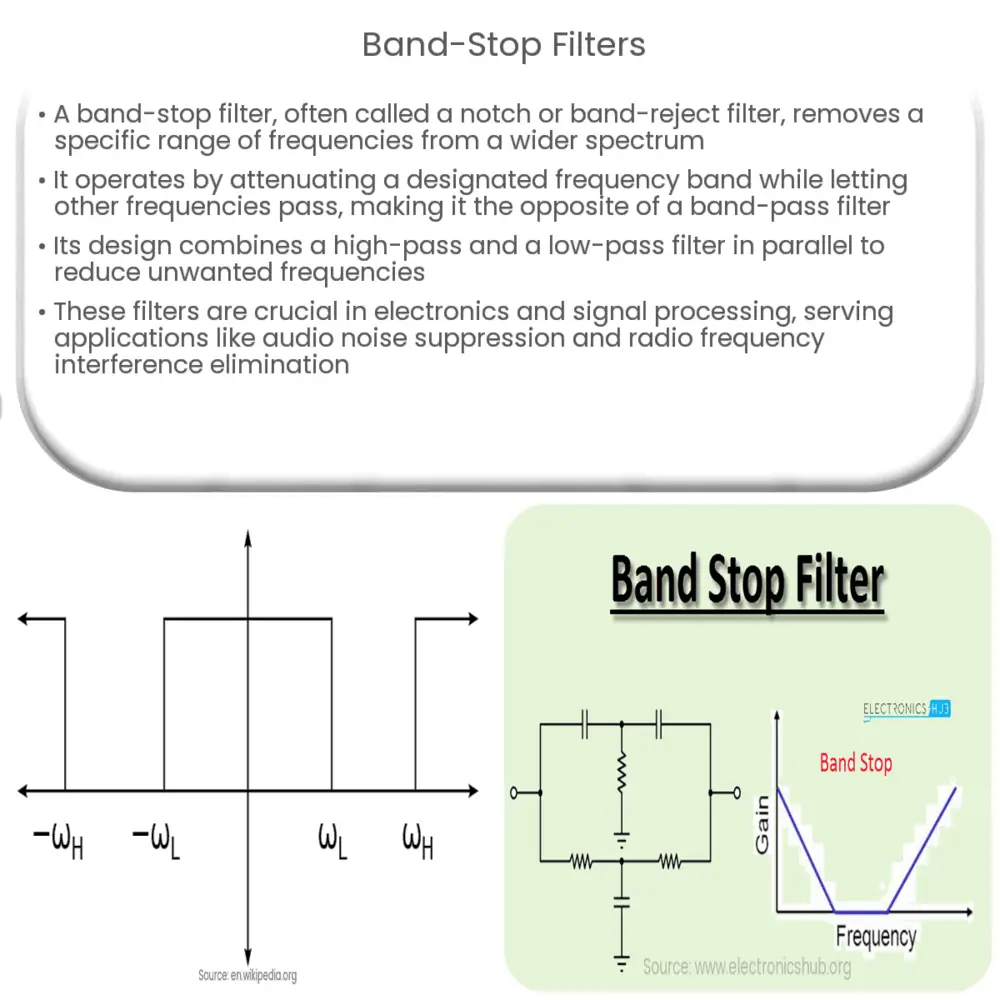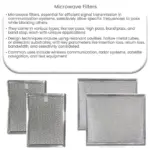Explore the world of band-stop filters in this comprehensive guide. Learn about their design, operation, types, applications, and key parameters.

Introduction to Band-Stop Filters
A band-stop filter, also referred to as a notch filter, or band-reject filter, is an essential component in the world of electronics and signal processing. It’s a device that eliminates or ‘filters out’ a specified range of frequencies from a broader range of frequencies.
Principle of Operation
The operation of a band-stop filter is rather simple yet crucial in various applications. Its name, ‘band-stop,’ gives a hint towards its function. The filter works by attenuating or ‘stopping’ a certain ‘band’ or range of frequencies while allowing other frequencies to pass through. In essence, a band-stop filter is the exact opposite of a band-pass filter, which allows only a specific frequency range to pass.
Design and Construction
- A band-stop filter consists of a high-pass filter (HPF) and a low-pass filter (LPF), both combined in parallel. These two filters are designed such that their cutoff frequencies surround the unwanted frequency band. The output of the filters is then summed, resulting in a signal where the unwanted frequencies are significantly reduced.
- Notch filters, a type of band-stop filter, are designed to remove a single frequency or a very narrow band of frequencies. This is typically achieved by creating a resonant circuit tuned to the unwanted frequency.
Applications of Band-Stop Filters
Band-stop filters have a wide range of uses in various industries and fields. They’re typically used in applications where certain specific frequencies need to be suppressed to avoid interference or noise, without affecting the overall signal quality. Here are some typical applications:
- Audio Processing: In audio processing systems, band-stop filters are used to suppress specific frequencies that cause humming or hissing noises.
- Radio Frequency Interference: Band-stop filters help in rejecting certain frequencies, thereby eliminating radio frequency interference in various communications systems.
Understanding band-stop filters is critical for anyone dealing with signal processing or electronics. However, this is just the surface; the design, operation, and applications of these filters are indeed a vast topic.
Types of Band-Stop Filters
There are two primary types of band-stop filters – the passive and active filters.
- Passive Filters: These are built using passive components like resistors (R), capacitors (C), and inductors (L). They don’t require any external power supply and can’t amplify the signal. Passive band-stop filters are commonly used in analog circuits.
- Active Filters: On the other hand, active band-stop filters are composed of passive components along with active elements such as transistors and op-amps. These filters require an external power source and can amplify signals.
Important Parameters of Band-Stop Filters
Key parameters to consider when working with band-stop filters include the cut-off frequency, stop-band frequency, and quality factor (Q-factor).
- Cut-off Frequency: These are the frequencies at which the filter starts and ends its action. Outside these frequencies, the filter has no significant effect on the signal.
- Stop-band Frequency: This is the range of frequencies that the filter suppresses. It lies between the two cut-off frequencies.
- Quality Factor (Q-Factor): This indicates how narrow or wide the stop band is. A high Q-factor results in a narrower stop band, while a low Q-factor gives a wider stop band.
Conclusion
In summary, band-stop filters are essential tools in the field of electronics and signal processing. By selectively attenuating a particular range of frequencies, they allow for a cleaner and more precise signal output. Whether you’re eliminating radio interference, suppressing a humming noise in an audio system, or managing signals in a broader electronic setup, these filters prove to be incredibly handy. While understanding their operation and design may seem complicated, knowing the basics of how they function can prove beneficial in various applications.



